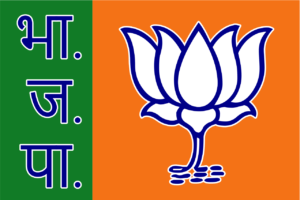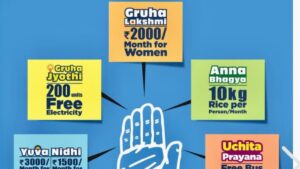13 mins read
Last Updated on June 12, 2023
Resize the Font:
Neo-liberalism is a bunch of ideas associated with free-market capitalism. It is generally associated with policies of economic liberalization, including privatization, deregulation, globalization, free trade, monetarism, austerity, and reductions in government spending to increase the role of the private sector in the economy and society.
I would like to look at 3 ideas in depth with the developments in the past few years. Specifically, free-market capitalism, Supply-side economics and Austerity.
Free-market fundamentalism
As with any fundamentalism, proponents of this ideology too are blinded to its negative impacts. They believe in it firmly because they are usually beneficiaries of it. They wouldn’t have experienced the adverse effects of it. They strongly oppose Government Intervention. Whenever I talk to them, I usually have the feeling that I am with them, but only until when they say there is absolutely no place for it. They say entrepreneurs and companies do better when government gives them free hand. Their words are lost on me when they condone subsidies or bailouts.
With their rhetoric they make it sound like the “invisible hand” is somehow like an “invisible god”. Their usual rhetoric goes something ike this It provides better quality goods and lower prices because of competition. It meets everyone’s needs and solves everyone’s problems in society. Competition is natural and everyone should embrace it. They say it as if we can’t be civil enough to choose to cooperate among ourselves.
Self-interest is good. Individuals and Companies are contributing to society by acting in their self-interest to maximize profit. The rhetoric only boasts about its upside and completely overlooks the negative impact. They are so biased and blinded to see the adverse effects as big as global warming is caused by it.
They always assume that self-interest is in the best interest of society and serves a greater collective interest. Usually, at this time, I would like to think of them as devotees of the “Invisible Hand God”.
But, we know that there is no free-market system in India or anywhere in the world. The government always intervenes not just to help the poor and underprivileged but gives subsidies, bail out companies and clears bad loans in banks.
The Government’s unwavering focus on supply-side and trickle-down economics shows that we don’t have a free-market economy.
In love with Supply-side economics
If there is any government scheme in India that reflects the philosophy of supply-side economics, it would be the Production Linked Incentive. It is aimed at boosting the manufacturing sector and to reduce imports. The objective of these schemes entails Make in India, incentivizing foreign manufacturers to start production in India and incentivizing domestic manufacturers to expand their production and exports. The GoI has introduced Rs 1.97 lakh cr (US$ 28 b) PLI schemes for 13 sectors.
It is not working. The scheme is not boosting the manufacturing sector, at least, as much as the government wants it. This is not my observation. Following are the words of Finance Minister Nirmala Sitharama that say it all.
“Is it like Hanuman? You don’t believe in your own capacity , in your own strength and there got to be someone standing next to you and say you are Hanuman, do it? Who is that person going to tell Hanuman? It can’t certainly be the government,” Sitharaman added.
Supply-side, Producers, Businesses or Corporate India. Pick the term you want to use it doesn’t matter. Pro-business might sound more appealing than Supply-side or corporate India. But, they are all one and the same.
Indian banks writing off Bad loans
The story of the Indian government overly focusing on the supply side doesn’t end here. When it is not helping to boost the manufacturing sector with billions of dollars in incentives, it is pumping money to clear bad loans.
Indian banks have written off bad loans worth Rs 10 trillion in the last 5 years. Not all of that amount came from the internal resources of the bank as it was supposed to. About Rs 3.3 trillion between FY16 and FY21 have been infused into state-run banks to help them cope with the bad loan crisis. This Rs 3.3 trillion is no small amount. It is close to 10% percent of the Indian Budget 2023-24 – 45 trillion rupees.
This Rs 3.3 trillion is taxpayers’ money and the government didn’t even think twice or consult public opinion before pumping them into banks. It is only natural to wonder – whatever happened to free-market principles? Especially, people who championed these principles.
The whole idea of free-market is that a more efficient organization wins out in the competition. Win-Win for both Producers and Consumers. The government is intervening and supporting the companies to keep their financial records strong. is the government not helping inefficient systems to survive and thrive? If so, will this not be a lose-lose for both Producers and Consumers?
The US government worse than the Indian government
The US government with the second biggest economy in the world has got a thing or two to learn from the Indian government. With all its ruthless privatization agenda, the Indian government is not perfect either. Yet, At least, the Indian government comes across as the one holding morally much higher ground than the US when it comes to falling to the feet of the private sector.
Under Modi, in 2019, the Auto industry faced a huge demand slump as high as 35% year on year. Yet, with their privatize-oxygen mindset, they didn’t resort to bailing out the industry.
The government’s chief economist had some harsh words for bailout-seekers not just in the auto sector but finance and real estate:
“If we basically expect the government to use taxpayers’ money to intervene every time when there are some ‘sunsets,’ then I think you introduce possible moral hazards as well as the possibility of a situation where profits are private and losses are socialized.” That would be, as he correctly noted, “anathema to the way the market economy functions.”
It is not to say that US Government works exclusively for employers. Sometimes, maybe very rarely, it looks after employees’ interests as well. We have seen this during covid pandemic. The US Government came out with the “Paycheck Protection Program”. This program funneled more than $500 billion to companies through the Small Business Administration to keep workers on the payrolls.
The US government in bed with Corporate American
The US is the country with the largest military spending in the world and has earned the title – the superpower of the world. Yet somehow, when it comes to its own private sector, it can’t seem to locate its backbone to stand up to them. Here is how the US government went beta and sucked up to its private sector.
During covid pandemic, the US government come up with 2 new credit facilities to support “businesses”. The first one is The Primary Market Corporate Credit Facility (PMCCF). The PMCCF allowed the Fed to lend directly to corporations by buying new bond issues and providing loans. Borrowers could defer interest and principal payments for at least the first six months so that they had cash to pay employees and suppliers (but they could not pay dividends or buy back stock).
The second one is Secondary Market Corporate Credit Facility (SMCCF). With SMCCF, the Fed could purchase existing corporate bonds as well as exchange-traded funds investing in investment-grade corporate bonds.
Now, if you know anything about the primary market and secondary market, you would say the primary market is where businesses raise money but not from the secondary market. The secondary market is where investors make money but not the businesses. So, why should the US government pump money into the secondary market if it is not pro-business? is the US government in bed with the secondary market players? Stocks and bonds?
We get a clear picture once we look at the numbers before and after these facilities were introduced. The following is an excerpt from the prospect.org site explaining with numbers.
As soon as it became clear that a $4.5 trillion slush fund would be created, equity markets ballooned. The total value of the stock market cratered to 103 percent of GDP, about $21.8 trillion, on March 23. By April 30 it was back to 136.3 percent of GDP, or $28.9 trillion. By that metric, $7.1 trillion in stock market wealth has been created in that period.
It’s not like there were any other positive stories in the economy in late March and April, so we can attribute most of this uplift to the establishment of Fed facilities. “The Fed is the action, it’s the only real action,” Marcus Stanley, policy director with the coalition Americans for Financial Reform, told me. Almost all of that benefit goes to the wealthy: A 2017 report showed that about 10 percent of Americans own 84 percent of all stocks.
It is one thing to protect employees and small businesses. It is altogether a different thing to revive the stock market. First off, not many own stocks. A 2017 report clearly shows that about 10 percent of Americans own 84 percent of all stocks. Secondly, nobody is dependent on the stock market for their livelihood.
Moral Hazard: Profits are privatized and losses are socialized
How many people have you come across who make their living with the stock market? If you have, then they must rich or they must be fund managers. For ordinary people, living is not made through investing in stocks. To put it simply, saving the stock market is saving wealthy investors and it is not about ordinary people. It is as if the US has not learned any lessons from the 2008 Great Recession……..Well, maybe, It has. The US did learn from the 2008 Great Recession that it can easily get away with it. So, once again the US government proved that it is for elites – top 1 or 10% rather than for everybody. During a pandemic, what that means is Paycheck Protection Program is only a cover-up for Credit Facilities for the rich.
Though the Indian government’s chief economist supports ruthless privatization but still holds some self-respect and is not as sycophant as his US counterpart is. He said he recognizes the problem of moral hazard with the public rescuing debt-ridden companies. Unlike the US during the 2008 recession, the US government simply bailed out big banks which were supposedly too big to fail. And, paid fat bonuses to bankers who caused the recession in the first place.
The question that comes to everyone’s mind is who is in charge? who is the big boss? Big banks or the government? Apparently, it looks like the US government is weak, pathetic and kowtow to BIg banks and Big money interests. The US with its super power and super military can’t even make a simple statement that the Indian economist did – By bailing out big banks, it creates “a situation where profits are private and losses are socialized”.
Another major component in Neo-liberal economic policy is Austerity. Let’s look at it in the section.
Austerity, Austerity, Ugh, Auserity
Wikipedia defines:
In economic policy, austerity is a set of political-economic policies that aim to reduce government budget deficits through spending cuts, tax increases, or a combination of both.
The whole point of austerity measures is to improve the financial condition of the government – to keep the debt low and increase the credit score. This is very important. We don’t want to see a government that can’t pay its interests. So, India has a separate law devoted to fiscal discipline – Fiscal Responsibility and Budget Management Act,2003.
Austerity for Poor & Global Competitiveness for Businesses
In the name of reducing the fiscal deficit, the government has either placed a new tax or increased the existing ones. Mainly, GST 5% on essential goods and fuel tax on Petrol and Diesel. This is when the GST on Gold is at 3% and Diamond at 1.5%. Though these taxes apply to everyone, it hurts the most who are at the lowest rung of society. These people are living on daily wages or paycheck to paycheck. They cannot afford these tax raises without pay raises. These taxes only came at the cost of lowering their standard of living.
On top of this, They have also either decreased or removed the subsidies given altogether. The subsidy given out on Cooking Gas has been steadily coming down and now, almost no one gets it. FY 2022, 14073 crore rupees had been allocated for LPG subsidies but the expenditure was just 242 crore rupees. This says everything. The Government doesn’t even want to continue with the Schemes it started like Ujwala Yojana and Garib Kalyana Yojana.
It is not against austerity policies when Corporations get tax cuts because they have to be “globally competitive”. In India, the Effective corporate tax rate has gone down from 35% to 26%. Some economists even say it has dropped to as low as 22%. But, it automatically becomes austerity when GST 5% is placed on everything. I mean everything including food items like Rice, Wheat, Milk etc.
Why this double standard? or are the austerity measures not meant for everyone in society? Don’t people want to be globally competitive? Should It be only businesses? This tax cut was introduced in Sept 2019. Since then, has the companies in India become globally competitive now?
Is it even a sound fiscal policy or an austerity measure to get rid of the highest slab under the surcharge tax, which is 37% in the new tax regime and applicable only to people whose income is more than 5 Crore rupees a year? Thereby, exchequer suffering a loss of 20 lakh rupees from each person falling under this slab.
If supply-side economic policies are about pro-business, in short, austerity measures are about…….. PRO-BUSINESS. Oh! come on again PRO-businesses. I understand how you feel. Spending cuts mean cuts to welfare schemes like subsidies for cooking gas. With no effective welfare schemes, people will have to scrape every Rupee. By keeping people poor and desperate, businesses get cheap labor. This way they don’t have to pay the full cost of labor to run their operations.
Pro-businesses policies do not necessarily mean a pro-free market either. Hand-outs and freebies are the terms we use to call welfare schemes. When it comes to bailing out companies, as I discussed in the previous section – supply-side economics, it is not hand-outs or freebies anymore. They became somehow some kind of sacred Pro-Business measures.
Handing out money is handing out whether it is to a poor family or a business. If it is a business, then it is against Free-market. In a free market, businesses are supposed to be competitive to survive and thrive. If it is not competitive, it should not survive. It should not get any help outside the free market – government or otherwise. That would only make the free market……Duh…..not free or less free.
If Businesses want to keep the free market, you know, free, they should raise capital through these four main ways:
(1) from early-stage investors; (2) by reinvesting profits; (3) by borrowing through banks or bonds; and (4) by selling stock.
Conclusion: Is there a cure for the plague?
I think there is a cure or at least, a treatment. This cure can only come from thinking beyond supply-side economics, market fundamentalism and austerity measures. It is not possible to imagine a cure without thinking about people while we think about profit. It is difficult to imagine a treatment without thinking about the community while we think about the market. Therefore, the solution to the problem created by this economic policy can not come within its neo-liberal policy framework.





Wow Thanks for this piece of writing i find it hard to come up with excellent info out there when it comes to this subject material appreciate for the write-up site